Embarking on a global sailing adventure is a dream for many, but before you chart a course for the horizon, a crucial question looms: what size yacht do I need to sail the world? It’s not just about having a vessel; it’s about choosing the right one for your needs, experience, and aspirations. This guide will navigate the complexities of selecting the perfect floating home, from understanding hull types and seakeeping abilities to budgeting, crewing, and equipping your vessel for the journey of a lifetime.
Get ready to dive into the exciting world of bluewater cruising!
The size of your yacht profoundly influences everything from your sailing experience and financial outlay to the crew you’ll need and the destinations you can reach. We’ll explore the intricate relationship between hull length and its performance in various sea conditions, comparing the strengths and weaknesses of monohulls, catamarans, and trimarans. You’ll learn how displacement affects fuel efficiency and how to estimate initial purchase costs, along with the ongoing expenses of yacht ownership.
Furthermore, we’ll unravel the practicalities of crewing, accommodation, navigation, and equipment, ensuring you’re well-prepared to tackle the challenges and savor the rewards of global sailing.
Final Conclusion
In conclusion, choosing the right yacht for a world sailing adventure is a multifaceted decision, influenced by your budget, experience, and the adventures you envision. Consider the factors discussed here – from hull design and seakeeping to crewing needs and equipment – to make an informed choice. Remember, the “perfect” yacht doesn’t exist; it’s about finding the best fit for
-your* unique journey.
So, you’re dreaming of circumnavigating the globe, eh? The yacht size depends on your comfort level and budget, of course. But imagine, instead of battling the waves, you’re navigating a different kind of service industry, like a hotel waitress dealing with demanding guests! Ultimately, the size of your world-sailing vessel should be as meticulously chosen as your preferred coffee order.
With careful planning, thorough preparation, and a spirit of adventure, you can turn your dream of sailing the world into a breathtaking reality. So, hoist the sails, embrace the open ocean, and prepare for an unforgettable experience!
FAQs: What Size Yacht Do I Need To Sail The World
What’s the smallest yacht suitable for world sailing?
So, you’re dreaming of circumnavigating the globe? Choosing the right yacht is crucial, but before you set sail, consider a comfortable basecamp for your pre-adventure planning! Perhaps a stay at the highly-rated karaksa hotel tokyo station while you finalize your itinerary. Back to the main question, the size of your vessel truly depends on your experience and budget, but bigger isn’t always better for a world cruise!
While some have circumnavigated in vessels as small as 30 feet, a yacht between 40-50 feet is generally considered a good starting point, offering a balance of seaworthiness, comfort, and manageability for extended voyages. This size range offers more storage, better performance in heavier seas, and room for essential equipment and a small crew.
How much should I budget for annual maintenance?
A general rule of thumb is to budget approximately 10-15% of the yacht’s value annually for maintenance, repairs, and upkeep. This can vary depending on the age and condition of the boat, the complexity of its systems, and your sailing habits. Older boats often require more maintenance, while newer boats may benefit from warranties.
What are the advantages of a catamaran versus a monohull for world cruising?
Catamarans offer greater stability, more living space, and shallower draft, making them suitable for exploring shallow waters. However, they can be more expensive to purchase and maintain, and some find them less comfortable in heavy seas. Monohulls typically handle rough weather better and are generally more affordable, but offer less living space and can heel significantly.
Is it better to buy a new or used yacht?
Both new and used yachts have their pros and cons. New yachts offer the latest technology and a warranty, but come with a higher price tag and depreciation. Used yachts can be more affordable and have already experienced some depreciation, but may require more maintenance and have outdated equipment. The best choice depends on your budget, experience, and preferences.



